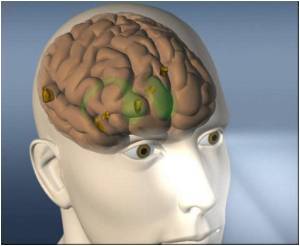Adolescence is a crucial stage when powerful memories are formed. A teen’s ability to remember is linked to reward-learning behavior, claims a study.
- Adolescence is a crucial stage for brain development
- The learning process of an adolescent is different from that of an adult
- The hippocampus and striatum in the brain enhance a teen’s ability to learn and form memories
"Using a combination of learning tasks and brain imaging in teens and adults, we identified patterns of brain activity in adolescents that support learning -- serving to guide them successfully into adulthood."
Brain Activity in Adolescents
Dr Juliet Davidow, a psychology postdoc at Harvard University, Dr Shohamy, and Dr Adriana Galván from the University of California, Los Angeles, conducted a study to test whether teen's sensitivity to reward could make them better at learning from good and bad outcomes.
The study involved 41 teens (ages 13-17) and 31 adults (ages 20-30), the authors focused on a brain region called the striatum, a region of the brain which is a critical component of the reward system. Studies have shown that striatum coordinates the brain function from planning to decision making. But, the striatum is well-known for its role in reinforcement learning.
“For example, imagine you are given a series of cards with numbers on them and are asked to guess the next number in the sequence. If you guess right, the striatum shows activity that corresponds to that positive feedback, thus reinforcing your choice," Dr. Davidow explained. "Essentially, it is a reward signal that helps the brain learn how to repeat the successful choice again."
The test included an image of a butterfly and a pair of flower pictures. The participants were asked to guess the flower on which the butterfly would land on. When participants guessed it right, the word “correct” flashed on the screen, and when the answer was wrong, the word “incorrect” flashed on the screen.
When the correct or incorrect label appeared on the screen, an unrelated image like watermelon or pencil was also displayed. These unrelated images were used in a memory test to examine whether the participants remembered their environment during the learning process.
The results showed that teens selected the right flower than the adults during the experiment. The teens also remembered the unrelated images and did better than adults on the memory test. The study suggests that teens have a better memory for retaining detail about unexpected outcomes.
Brain Scans with Functional Magnetic Resonance Imaging (fMRI)
The researchers wanted to see what exactly happens in the brain. Dr Shohamy teamed up with Dr Galván scanned the brains of each participant with functional magnetic resonance imaging (fMRI) while they were performing the learning tasks. Initially, the researchers hypothesized that the teens learning abilities were due to the hyperactive striatum. But, there were no difference in striatal activity in the brains of the teens and adults. But they found the difference in a new region called the hippocampus, the brain’s memory headquarters. The hippocampus stores memories, events, places, people, but it is not related to reinforcement learning.
"When we compared the brains of teens to those of adults, we found no difference in reward-related striatal activity between the two groups. We discovered that the difference between adults and teens lay not in the striatum but a nearby region: the hippocampus," said Dr Davidow.
During reinforcement learning, the fMRI analysis showed activity in the hippocampus for teens but not adults. But, the hippocampal activity coordinated with activity in the striatum.
"What we can take from these results isn't that teens necessarily have better memory, in general, but rather the way in which they remember is different. By connecting two things that aren't intrinsically connected, the adolescent brain may be trying to build a richer understanding of its surroundings during an important stage in life," said Dr Shohamy, who is also a member of Columbia's Kavli Institute for Brain Science.
"Broadly speaking, adolescence is a time when teens begin to develop their independence," said Dr. Shohamy. "What more could a brain need to do during this period than jump into learning overdrive? It may be that the uniqueness of the teen brain may drive not only how they learn, but how they use information to prime themselves for adulthood."
The researchers are working to determine what changes occur in the brain between adolescence and adulthood when it comes to reinforcement learning. The results of the study could pave the way for developing new approaches for teaching teenagers.
"If you frame something positively, it could be the case that adolescents will remember things about the learning experience better," says Davidow. "In everyday life, they're paying attention to their environment in a way that is different from adults."
The study is published in the Journal Neuron.
Reference
- Brain Development in Young Adolescents - (http://www.nea.org/tools/16653.htm)
Source-Medindia














